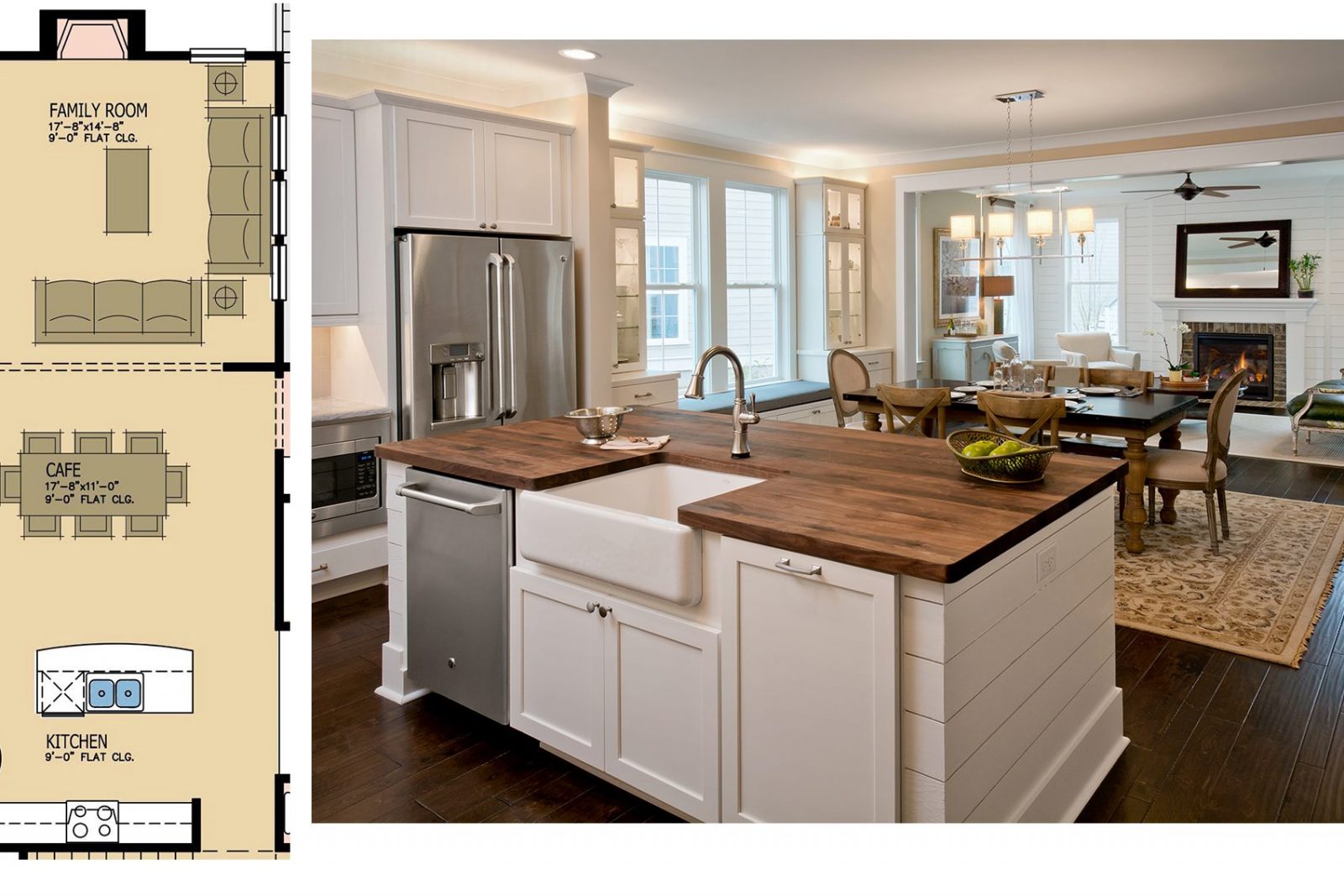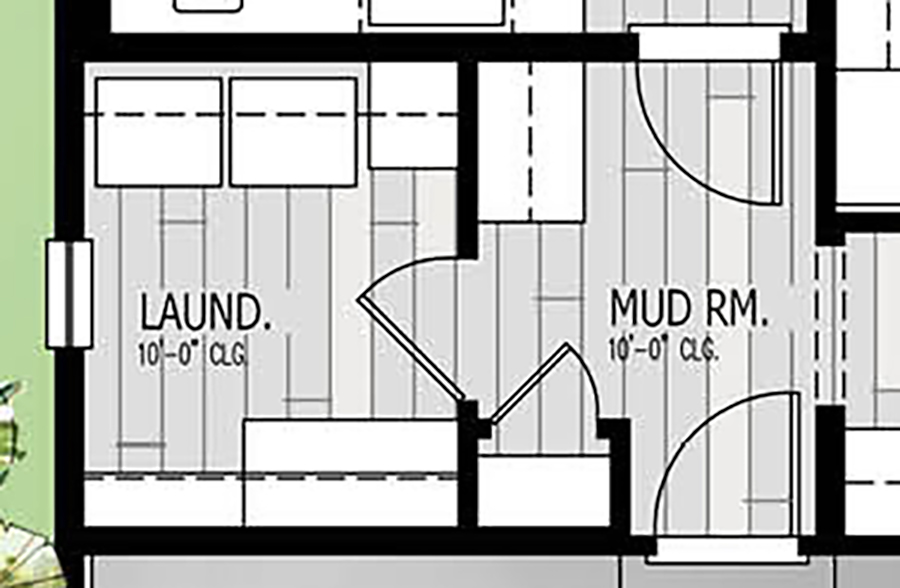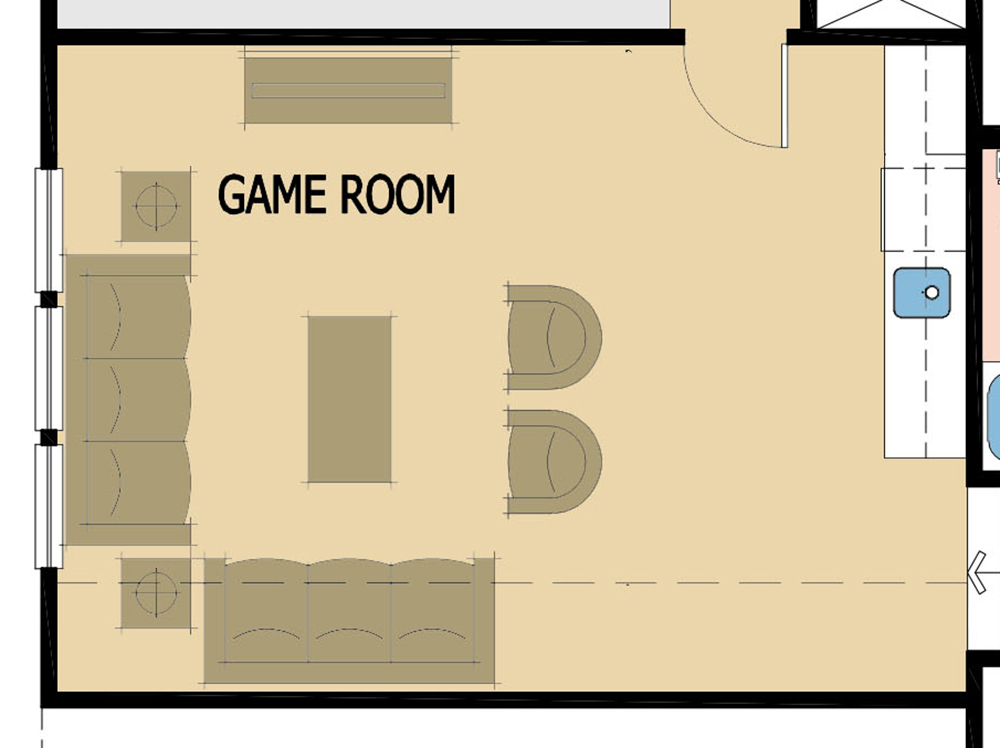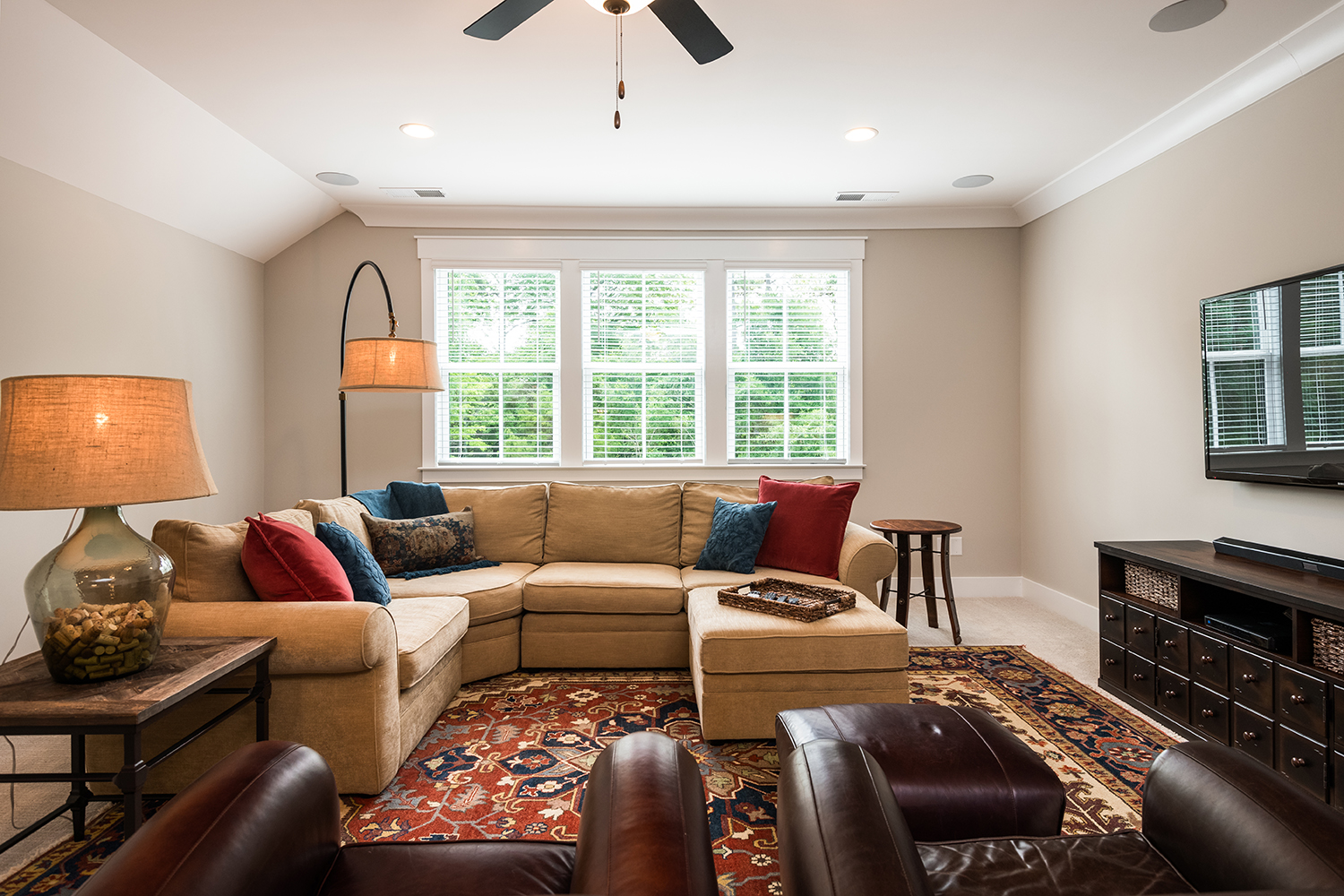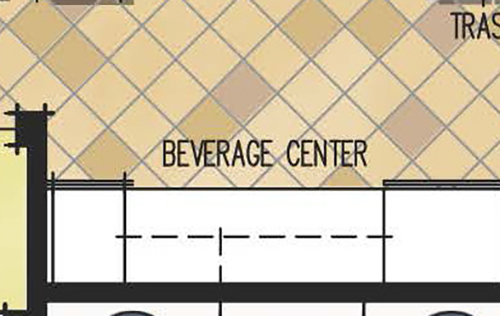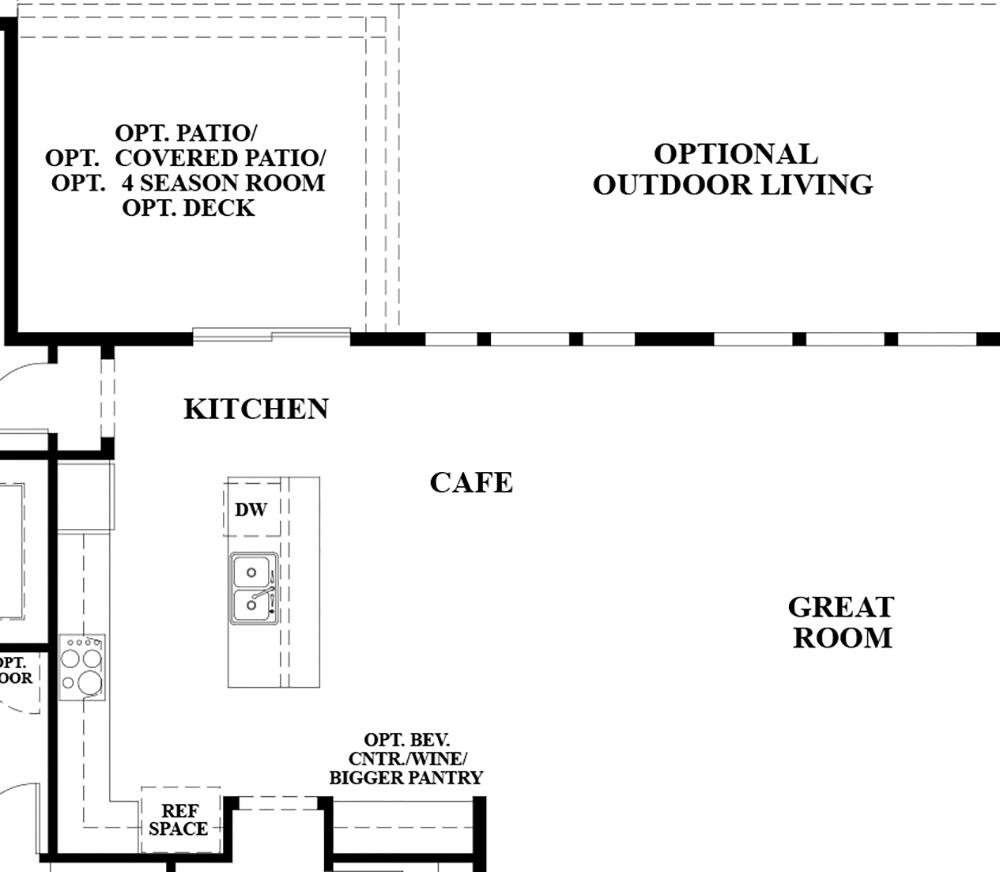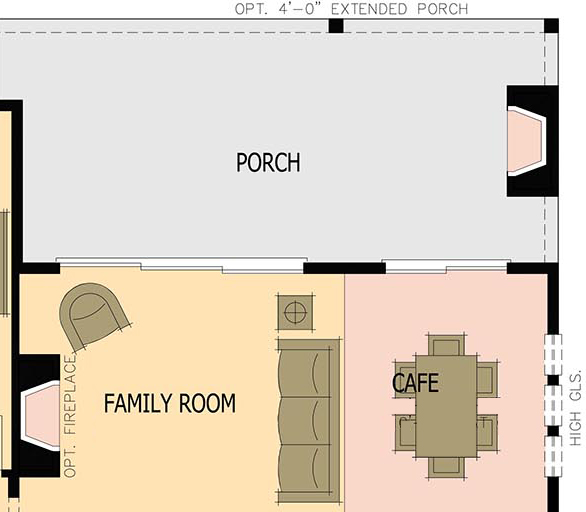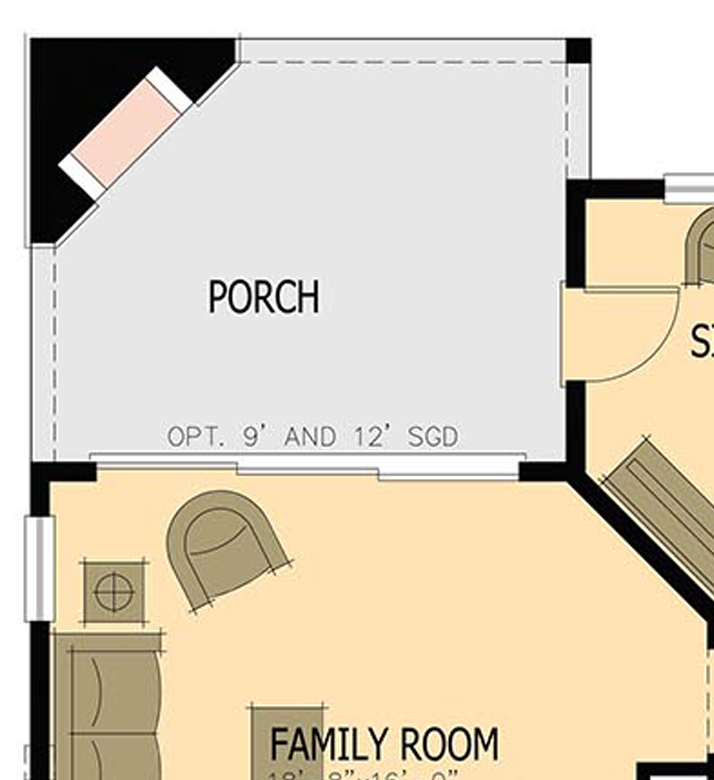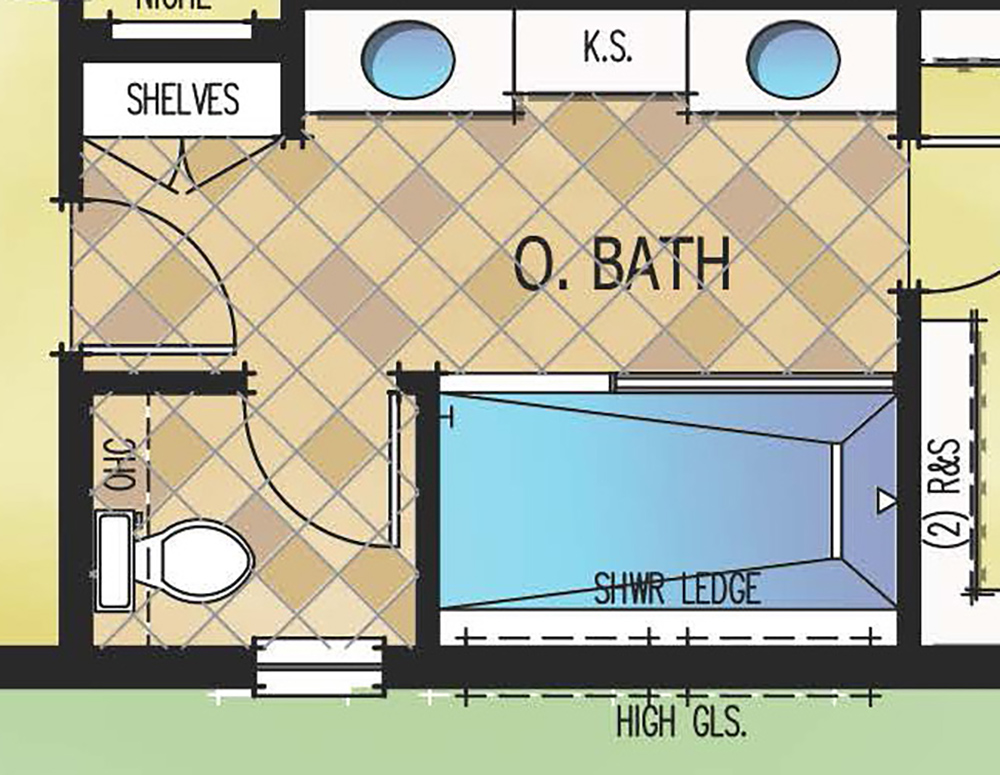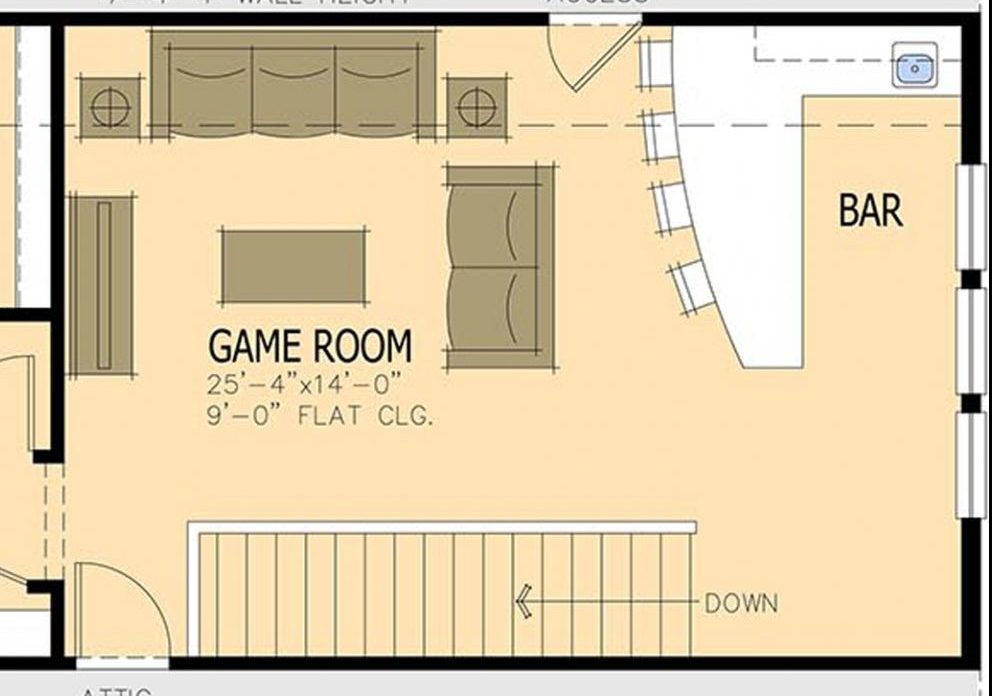Over the past few weeks, Housing Design Matters has been conducting online classes for our builder clients and their new home sales professionals. These are professionals who have mastered the art of selling houses face to face, in the actual models. But in this crazy world, their routine has been turned upside down and some might find themselves less confident at their craft. Could they sell a home armed only with floor plans, without even meeting the potentials buyers face to face?
As someone who lives and breathes floor plans every day of the week, I realized I had a lot of knowledge that could be shared. After just the first few classes, I discovered that not all sales professionals had the same degree of knowledge in floor plans. Furthermore, the buyer may not be able to read and fully understand floor plans but doesn’t want to admit it. Now the sales professional is in the awkward position of walking buyers through their floor plans without making the buyer feel stupid. Talk about walking a tight rope.
Floor Plan Basics
Our first step in “Mastering the Art of Selling from Floor Plans” is to cover the basics of reading floor plans. The floor plans I’m referring to are the ones that customers are viewing on builders’ websites. These are sales brochures, not full working drawings, so there are a lot of gray areas.
What do dashed lines mean?
As mentioned in a previous blog, a floor plan is an artificial construct of a house. Specifically, it is the view of floor from 4’ up – as if a machete had cut the house along that 4’ height. Everything above 4’ is not shown on the plan except as a dashed line. Ah, if only it were so simple, but some things below 4’ are also shown as dashed lines. Sounds like an evil plot to conceived by snooty architects to confuse mere mortals. (evil laugh sound here) Not to worry, I’ll do my best to explain what to look for!
“Something above”
The kitchen is littered with dashed lines for various reasons. The cabinets on either side of the stove have dashed lines indicating cabinets above. Without referring to the specs of the house, there is no way to know if these are 36” tall, 42” tall, or a double set of cabinets. Similarly, you may notice a dashed line above the stove or cook top. That could represent a hood or a hood with a microwave.
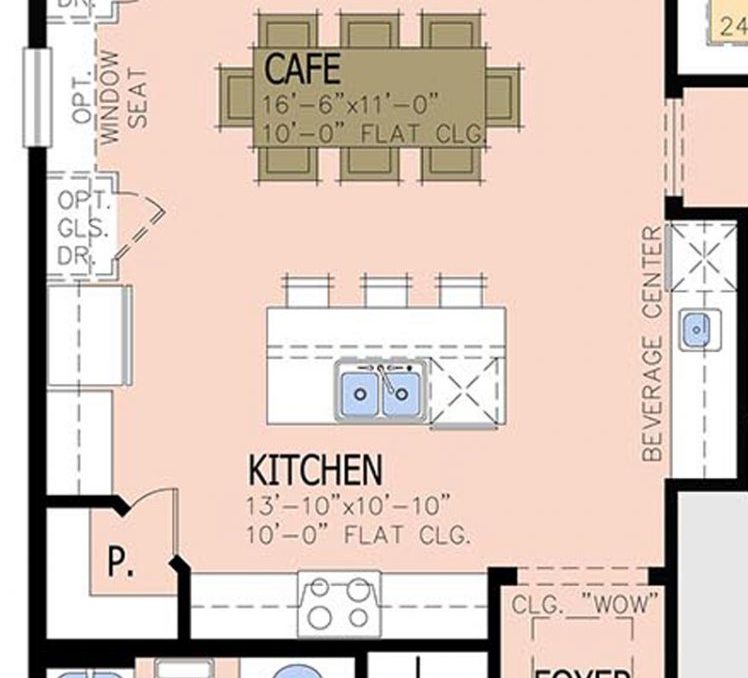 Moving into the laundry room, you may see dashed lines above the washer and dryer. They could represent cabinets like in the kitchen or wire shelves. There is no way the buyer can know without the aid of their sales professional.
Moving into the laundry room, you may see dashed lines above the washer and dryer. They could represent cabinets like in the kitchen or wire shelves. There is no way the buyer can know without the aid of their sales professional.
Dashed lines can also represent a change along the ceiling line. Maybe it’s a dropped header. It could be flat, arched, drywall cased or wrapped in trim – the buyer can’t determine this from a brochure. Dashed lines could also indicate a two-story volume, vaults or beams in the ceiling. Context is everything, and it is vital that the sales professional convey this level of detail when conversing with their clients.
“Something below”
Back in the kitchen, let’s look at the kitchen island. Some brochures show dashed line behind the sink and others do not. Often these dashed lines indicate a low wall under the counter-top. This can be helpful because it indicates an overhang and thus a place to sit at the island. Other builders have chosen not to clutter their drawings with these dashed lines, so it is up to the sales professional to point this out to their buyer – who may have never stepped foot in one of your houses. Often, dashed lines indicate something below the counter-top like appliances, dishwashers, under counter refrigerators or warming drawers.
Options
We often see options dashed in on floor plans. It might be the double door for the den, the refrigerator, washer or dryer. These things may be labeled as optional, but not always. Make sure your buyers know that the dashed line of the dishwasher indicates that it is below the counter-top and is not an option – unless it is. (would that require a finer dashed line?)
Windows and doors
Most know what windows and doors look like on a floor plan. But what about a sliding glass door or French doors? Do your buyers know what those look like? Some double glass exterior doors are hinged from the center (referred as an atrium door by builders) and others from each side – but to a buyer walking through the house, they will look the same. Perhaps the most confusing door is the single French door. There is no way to determine the type of the door from a floor plan only, so know your specifications.
I’m often asked by buyers why some doors are only opened 45 degrees. “Does that mean the door won’t open all the way?” The answer is no. It will open all the way; it is a just a default setting in Auto Cad. The partially opened door is just a representation of the direction the door swings. And why do some front doors swing out and others swing in? (A subject for another day)
But what about high glass? Technically, high glass that occurs about the 4’ line should be dashed in and the wall should be shown as solid. This often makes it hard to pick up on floor plan, so it is shown just like other windows. High glass in the shower without dashes means you’re looking at an exhibitionist shower. Oops.
Half walls and full walls
Understanding if a wall is a full wall or a half wall is vital to understanding how a room lives and feels. Back to our 4’ line and the machete, a wall should be shown as solid if it is taller than 4′ and not filled in if it is below 4’. Half walls allow someone standing to see over the top of the wall – certainly not something you would want to see in a bathroom or bedroom. Half walls can work magic at opening rooms up from one to another. Stairs often employ half walls or handrails, allowing viewers to observe the sculptural or interesting lines of the stairs. On the second floor, half walls often surround the stairs allowing the users to see into the adjacent room before they reach to the top of the stairs.
But half walls are often misunderstood by the graphic artist putting together a builder’s brochure. Again, this is where it’s important for the salesperson to know the plan as well as the architect. Should you run across a mistakenly solid half wall, it is important to point this out to buyers, so they don’t get a misconception about how the room or staircase feels. It is also important to point it out to marketing so it can be corrected.
It’s Okay to Not Know
So, with all the dashed lines, windows and options, inevitably, a sales professional will get a question from a buyer about a floor plan that they can’t answer on the spot. I think it is best to say “I don’t know, let me get back to you.” For two reasons. First, giving the wrong information risks losing the trust of your buyer. Second, this gives you a reason to follow up with your buyer in a less threatening way.
Thanks for including me in your day. And if you know of someone who would benefit from today’s blog – whether your in-house sales professional or someone in outside sales – please forward them this blog. Better yet, invite them to subscribe to our weekly newsletter at the bottom of this page!
Now let’s go sell some houses!
Categorized in: Housing in the Pandemic, Selling Floor Plans
This post was written by Housing Design Matters


